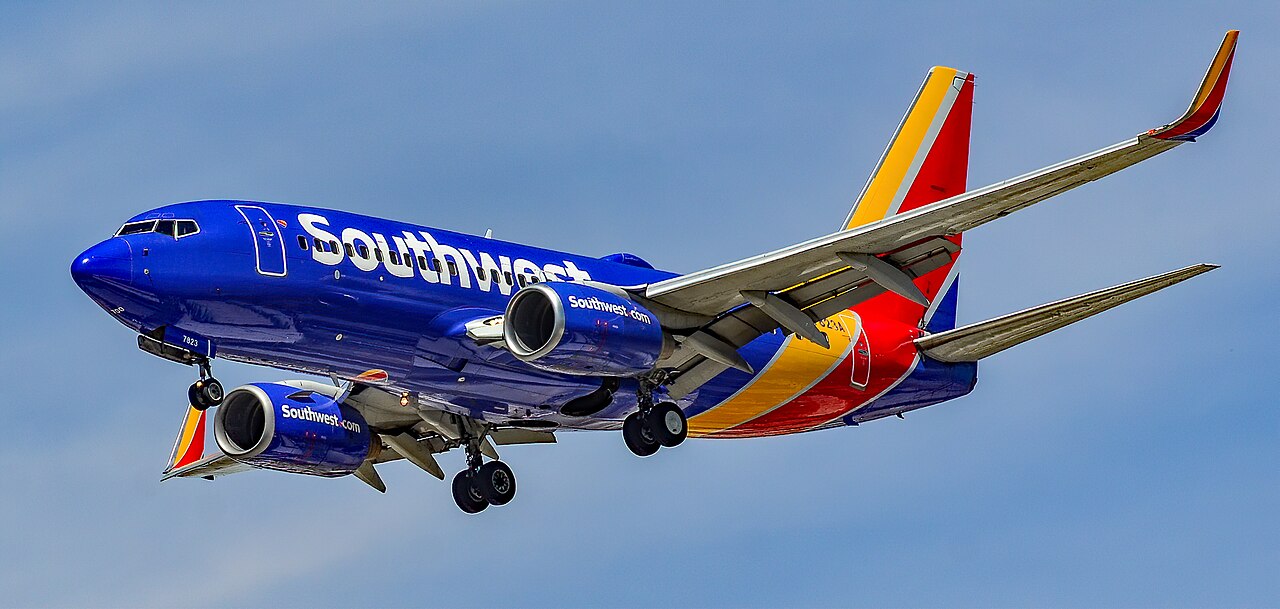On Thursday, November 21st, a Southwest Airlines Boeing 737-800, operating as Flight SWA4277, encountered a cabin pressurization failure shortly after departure from Denver International Airport (DEN). The flight, bound for Oakland International Airport (OAK), returned to Denver safely, with no injuries reported among the passengers or crew.
Incident Overview
The aircraft, registered as N8551Q, took off at 8:50 PM local time, embarking on the 1,169-mile journey to Oakland. However, the flight encountered issues just four minutes into its ascent. Southwest reached a maximum altitude of 12,200 feet before leveling off due to a pressurization failure.
Join us on TELEGRAM for the Latest Aviation Updates fresh to your phone.
According to data from Flightradar24, the crew initiated a rapid descent to 10,000 feet and subsequently to 7,700 feet. During this time, the flight completed two circuits, likely to burn fuel in preparation for landing. Despite the situation, no oxygen masks were deployed, and passengers remained calm.

After 31 minutes of flight time, the aircraft began its final descent, landing safely back at DEN. It taxied to the gate under its own power, where passengers deplaned. The aircraft was subsequently grounded for inspection and maintenance.
Aftermath and Recovery
Southwest Airlines acted swiftly to mitigate the disruption. A replacement aircraft was dispatched to carry the passengers to their destination. Departing at 10:56 PM local time, approximately two and a half hours after the original flight’s planned departure, the substitute aircraft landed in Oakland at 12:39 AM PST, maintaining the same delay duration.
The affected aircraft, N8551Q, is a 7.11-year-old Boeing 737-800, manufactured at Boeing’s Renton facility and delivered to Southwest Airlines in October 2017. The plane features 175 economy class seats and is powered by two CFM International CFM56-7B27 engines. As of June 2024, it had logged 22,501 flight hours and 11,281 flight cycles, with an average yearly addition of 3,354 hours and 1,682 cycles.
Understanding Cabin Pressurization
Cabin pressurization systems in modern jetliners are vital for maintaining a safe and comfortable environment at high altitudes. These systems use engine bleed air to maintain a cabin altitude of approximately 6,000 to 8,000 feet, a level that prevents decompression sickness, barotrauma, and other altitude-related issues.
Air is conditioned through heat exchangers and air conditioning packs to ensure passenger comfort by reducing moisture content and cooling the air. Valves, including outflow valves, regulate the cabin pressure. A malfunction in these components, such as the one experienced by N8551Q, can prevent the cabin from pressurizing correctly.
When pressurization fails, flights must either descend to an altitude below 10,000 feet—where passengers can breathe comfortably without supplemental oxygen—or be aborted altogether.
Youssef Yahya is the CEO and Founder of Aviation for Aviators. He also serves as the Chief-in-Editor of the platform’s website, where he shares his passion for aviation and provides valuable resources for aviation enthusiasts and professionals alike. His love for aviation and entrepreneurial spirit drive him to create innovative solutions, making Aviation for Aviators a unique resource in the aviation sector.
You might also like:
- Boeing expects the Middle Eastern Region fleet to surpass 3,000+ aircraft by 2041
- Families of Boeing 737 MAX Crash Victims Oppose Boeing’s Plea Agreement
- Emergency communication between cabin crew and flight crew
- Emirates Unveils the First 9 Destinations for its Brand-New A350 Aircraft
- FAA Bans U.S. Flights to Haiti Due to Security Concerns
Discover more from Aviation for Aviators
Subscribe to get the latest posts sent to your email.


Leave a comment